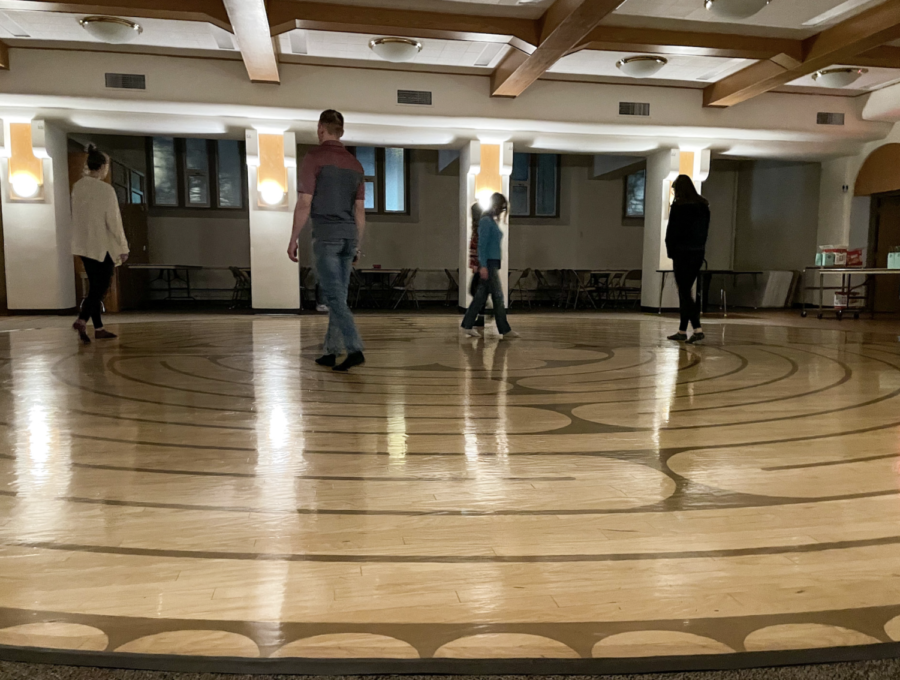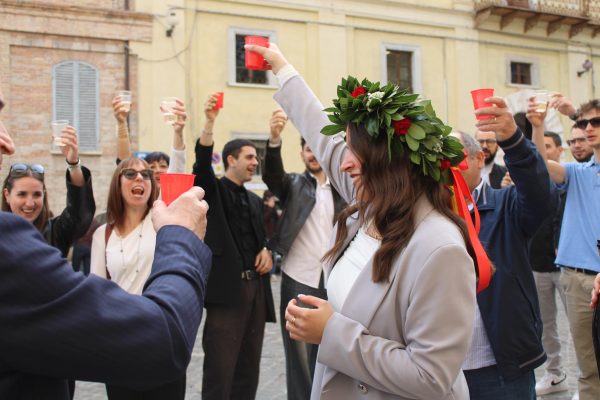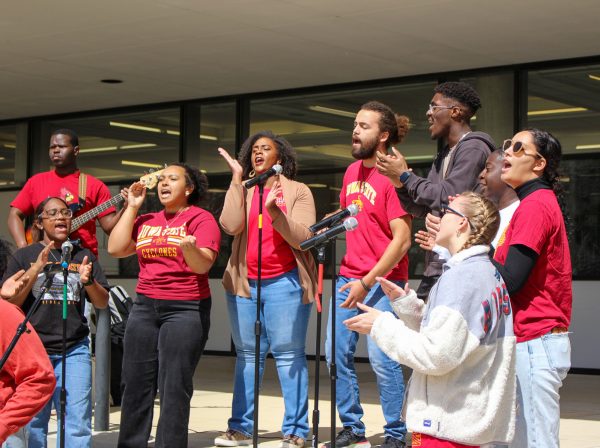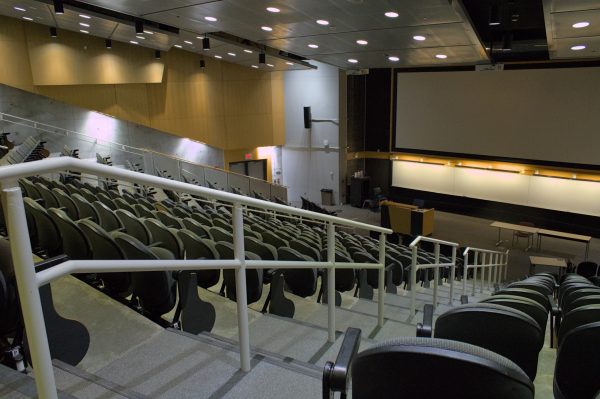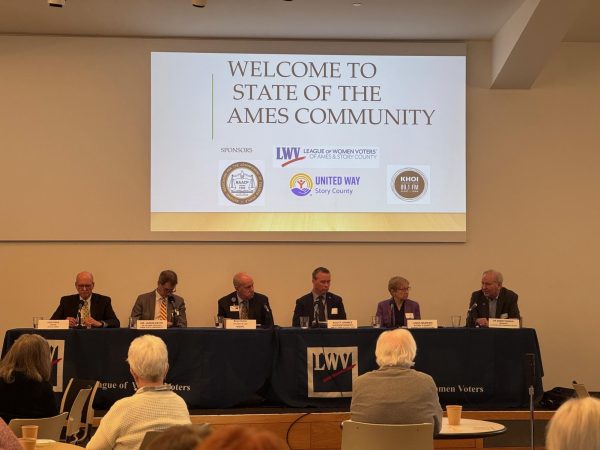Interfaith labyrinth gives students new insight before finals week
Students entered into the labyrinth one by one.
Students walked through an indoor labyrinth Tuesday to self-reflect and relax before finals as part of an interfaith walk hosted by The Vine, an inclusive campus ministry.
As the lights inside the church dimmed, attendees took their shoes off and lined up to enter the labyrinth. One by one, attendees began walking the labyrinth in silence, walking at their own pace and stopping to reflect.
“The one thing I would say from my experience is to walk with expectation,” Rev. Jen Hibben, director of The Vine, said. “Expect that something will happen. It doesn’t have to be some huge revelation, but expect that you will exit differently than you enter.”
“A maze and a labyrinth are not the same,” Susan Harper, who led the walk and director of the LGBTQIA+ Student Success Center, said. “A maze is meant to confuse. A labyrinth has one continuous path.”
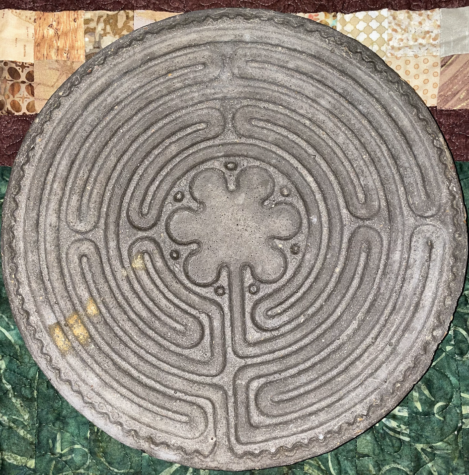
Labyrinths follow one continuous path in a predictable way and sometimes double back on themselves, Harper said.
“It sometimes looks like you’re getting closer to the center and then farther from the center, which is a lot like life,” Harper said. “Knowing that it is one path and you just have to keep your feet on it allows your mind and your spirit to do what they need to do.”
Labyrinths originated before mazes and are an ancient symbol. Harper said walking a labyrinth is a practice that meets you where you are.
“It’s actually an interfaith practice,” Harper said. “It’s completely compatible with God however you understand him, her, it or them, but it’s also completely compatible with spiritual paths that sort of don’t have god, or goddess or the gods in it.
Amber Best, a junior majoring in kinesiology and health and leader of the enneagram small group, said that before entering the labyrinth, she was not sure what to expect after Hibben said to go into the labyrinth with expectation.
“I didn’t think I could get anything out of it, you know, come out with, like, a new insight about something,” Best said. “But, that was exactly what happened.”
Best said she picked a problem before going into the maze, and the process of going through the labyrinth, with its long stretches and turns, guided her.
“I just came out of it with, like, a new perspective and new insight on the problem I came into it with,” Best said.
Walking the labyrinth also allowed those who attended to take a moment for themselves and relax.
“It’s dead week; we’re all dead and stressed out,” said Zachary Riedemann, a sophomore majoring in agricultural studies. “So, I was like I need something to relieve the stress and kind of take my mind off of everything going on and thought this would be a great opportunity to do so.”
Best said that giving herself space to do something that relaxes her feels very energizing and allows her to frame it as a productive activity.
“I’ve been interested in doing more meditative practice and just feel like it’s really good for spiritual growth and also personal healing for your mental health,” Best said.
The outcome of walking through the labyrinth is unique to each person and each experience.
“I’ve walked hundreds of labyrinths,” Harper said. “Everyone is new every time because I’m new every time I come to it.”
Your donation will support the student journalists of the Iowa State Daily. Your contribution will allow us to purchase equipment, send our student journalists to conferences and off-set their cost of living so they can continue to do best-in-the-nation work at the Iowa State Daily.


